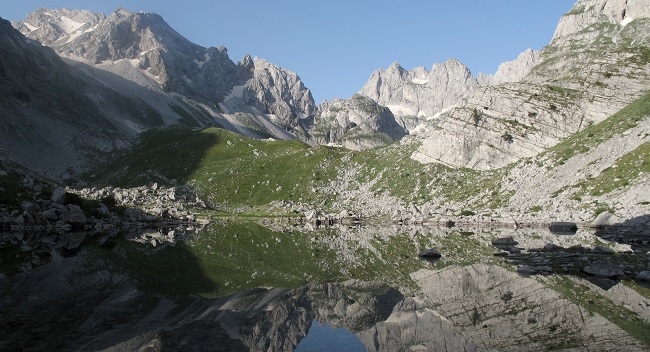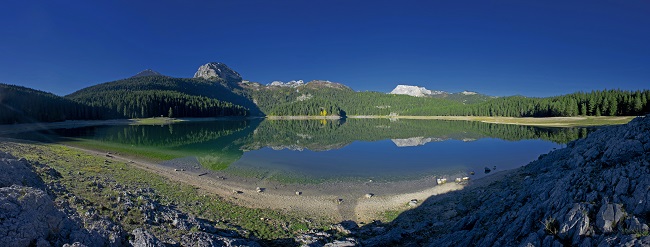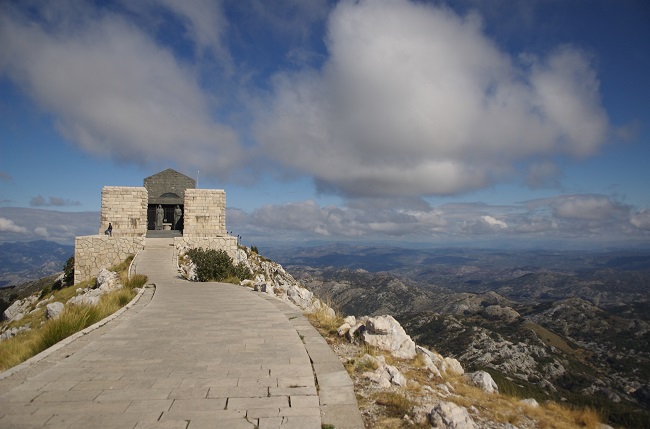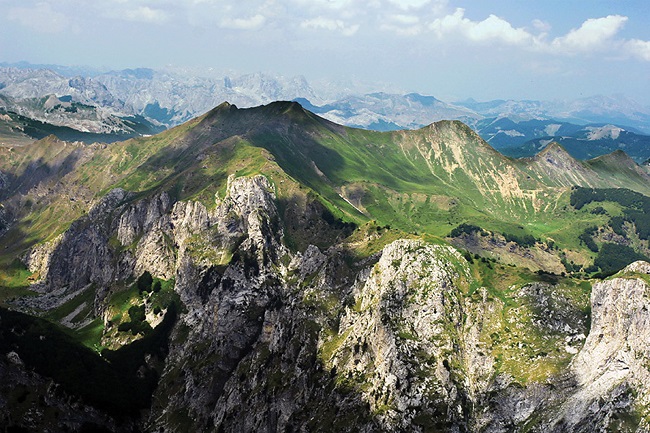Enjoy the wonderful coastline of Skadar Lake, stony stories of Lovćen, the primeval wilderness of Mt. Biograd, deep canyons of Mt. Durmitor and magical Mt. Prokletije.
Five national parks, covering 8% of the territory of Montenegro, symbolize extraordinary diversity and contrasts of the heart of the Mediterranean. Some of their main attractions are exceptional biological diversity, hiking and cycling tours through gorgeous landscapes, camping areas, boat trips on the largest lake in the Balkans, bird watching, walking tours in one of the last European primeval forests, unique scenic views from high lookout points, rafting through the deepest European canyon, scaling the highest peaks of the Dinaric Alps, wooden boat trips on glacial lakes, kayaking, adventure parks situated in Mt. Durmitor and Mt. Lovćen, zip lines, sport fishing, old churches and monasteries, medieval tombstones…
“Mountain Biograd” National Park

Biograd Lake is the largest and most renowned glacial lake in this park. The central part of the park, situated at an altitude of 1,094 meters, in the heart of a primeval forest, is the renowned picnic site with well-kept green areas, a parking area, a restaurant, bungalows, lighted paths and a camping area. In summer, it is the number one place to visit for many tourists particularly for those in transit who are seeking shelter from the heat and stop by the park on their way to their destinations on the coast.
“Durmitor” National Park

It covers an area of five Montenegrin municipalities, but its center is the town of Žabljak, the largest winter resort in Montenegro offering winter sport facilities and catering services in the field of tourism and mountaineering. Durmitor is home to 18 glacial lakes at an altitude of more than 1,500 meters above sea level. The locals call them the eyes of the mountain, but the most stunning one is the Black Lake. A top tourist attraction is the Tara River canyon.
“Lovćen” National Park

Covering the central and highest part of a mountain of the same name, encompassing 6,400 hectares, Lovćen is famed for a number of look out points offering all-around views across the surrounding area: the sea, Skadar Lake or high mountains in the north. Mount Lovćen is the symbol of Montenegrins freedom, and Montenegrins think of it as the holy altar. It is here, at the top of Jezerski vrh, that the glorious Mausoleum of Petar II Petrović Njegoš, spiritual and secular ruler of Montenegro and a renowned poet and philosopher, was built. Even today, people in the former Yugoslavia remember him as the author of the famous epic poem and drama called The Mountain Wreath. Visiting his mausoleum is the national park’s star attraction. It is accessible via a 20-kilometer road from Cetinje, and then there are 461 steps to take up to the entry at the top of the mountain.
“Prokletije” National Park

The winters here are very severe and long, and the summers are chilly and short. The park is surrounded by peaks higher than 2,000 meters above sea level, and glacial lakes, smaller and bigger waterways, rivers, springs and drinkable and mineral water springs flow through it. “Prokletije” National Park is the most recent national park to have been established in Montenegro and its steep summits are quite challenging even for experienced mountain climbers. Mt. Prokletije is also known as the Montenegrin Alps. Two nature parks are also a part of the park: Volušica and Hrid Lake.
“Skadar Lake” National Park

Many civilizations that had passed through this area have left behind their traces contributing in this way to the cultural and historic mosaic of the Skadar basin. Skadar Lake islands are dotted by many medieval fortifications, churches and monasteries, while two tiny towns on the lake’s shore, Virpazar and Rijeka Crnojevića, are recognizable due to the restaurants serving traditional specialties. There are many attractive beaches on the shore and in appearance they do not differ from those on the coast at all.